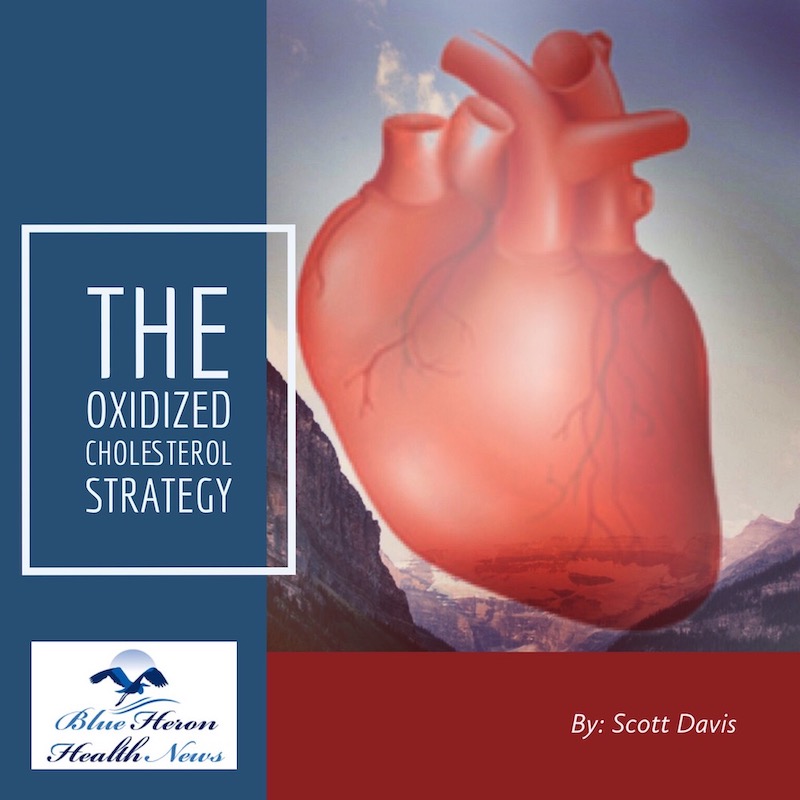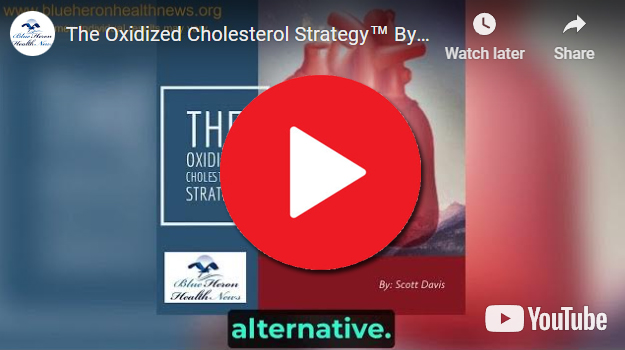
The Oxidized Cholesterol Strategy™ By Scott Davis The Oxidized Cholesterol Strategy is a well-researched program that reveals little known secret on how to tackle cholesterol plaque. This program will tell you step by step instructions on what you need to completely clean plaque buildup in your arteries so as to drop your cholesterol to healthy level.
What is oxidized cholesterol?
Introduction
Oxidized cholesterol is a term that refers to cholesterol that has undergone oxidation, a chemical process that alters its structure and properties. This oxidized form of cholesterol is a significant factor in the development of atherosclerosis, a condition characterized by the buildup of fatty deposits in the arterial walls. Understanding the nature, formation, and impact of oxidized cholesterol is crucial for comprehending its role in cardiovascular disease and other health conditions. This comprehensive analysis explores the chemistry of cholesterol oxidation, sources of oxidized cholesterol, its effects on health, diagnostic methods, and strategies for prevention and management.
Chemistry of Cholesterol Oxidation
Structure of Cholesterol
Cholesterol is a lipid molecule with a complex structure composed of four hydrocarbon rings and a hydrocarbon tail. It is an essential component of cell membranes and a precursor for the synthesis of steroid hormones, bile acids, and vitamin D.
- Hydroxyl Group: Cholesterol has a hydroxyl group (-OH) attached to the third carbon of the A-ring, which makes it an alcohol.
- Double Bond: There is a double bond between the fifth and sixth carbons in the B-ring.
- Hydrocarbon Tail: The side chain attached to the seventeenth carbon extends the molecule’s hydrophobic properties.
Oxidation Process
Oxidation of cholesterol involves the addition of oxygen molecules, leading to the formation of various oxidized derivatives known as oxysterols. This process can occur through enzymatic and non-enzymatic pathways:
- Non-Enzymatic Oxidation: This occurs primarily through the action of reactive oxygen species (ROS), such as free radicals, which are generated during normal metabolic processes and from external sources like pollution, radiation, and smoking.
- Enzymatic Oxidation: Specific enzymes, such as cytochrome P450 oxidases, can also oxidize cholesterol, forming different oxysterols.
Sources of Oxidized Cholesterol
Oxidized cholesterol can be found in various sources, both endogenous (produced within the body) and exogenous (introduced from outside the body).
Endogenous Sources
- Lipid Peroxidation: Oxidative stress within the body can lead to the peroxidation of lipids, including cholesterol, resulting in the formation of oxysterols.
- Enzymatic Activity: Certain enzymes in the body are capable of oxidizing cholesterol, contributing to the pool of endogenous oxysterols.
Exogenous Sources
- Dietary Intake: Foods high in cholesterol, particularly those that are processed, cooked at high temperatures, or exposed to air for extended periods, can contain oxidized cholesterol. Examples include:
- Fried Foods: Deep-fried foods often have high levels of oxidized cholesterol due to the high cooking temperatures and prolonged exposure to air.
- Processed Meats: Sausages, bacon, and other processed meats can contain oxidized cholesterol.
- Dairy Products: Butter, cheese, and other dairy products can become oxidized during processing and storage.
- Cooking Methods: Methods such as frying, grilling, and roasting can increase the oxidation of cholesterol in foods.
Effects of Oxidized Cholesterol on Health
Oxidized cholesterol is associated with various adverse health effects, particularly related to cardiovascular disease.
Atherosclerosis
The primary health concern associated with oxidized cholesterol is its role in the development of atherosclerosis:
- Formation of Plaques: Oxidized cholesterol is taken up by macrophages in the arterial walls, leading to the formation of foam cells and fatty streaks, which are the precursors to atherosclerotic plaques.
- Inflammation: Oxidized cholesterol promotes inflammation in the arterial walls, contributing to the progression of atherosclerosis.
- Endothelial Dysfunction: It can impair the function of the endothelium (the inner lining of blood vessels), reducing its ability to regulate blood flow and maintain vascular health.
Cardiovascular Diseases
Atherosclerosis, driven by oxidized cholesterol, can lead to various cardiovascular diseases, including:
- Coronary Artery Disease (CAD): The buildup of atherosclerotic plaques in the coronary arteries can reduce blood flow to the heart, leading to chest pain (angina) and increasing the risk of heart attacks.
- Stroke: Atherosclerosis in the carotid arteries can reduce blood flow to the brain, increasing the risk of stroke.
- Peripheral Artery Disease (PAD): Reduced blood flow to the limbs due to atherosclerosis can cause pain and increase the risk of limb ischemia.
Other Health Impacts
Oxidized cholesterol may also play a role in other health conditions:
- Neurodegenerative Diseases: Oxidized cholesterol can cross the blood-brain barrier and has been implicated in neurodegenerative diseases such as Alzheimer’s disease.
- Chronic Inflammation: It can contribute to chronic inflammatory conditions, exacerbating diseases like rheumatoid arthritis and inflammatory bowel disease.
Diagnostic Methods
Identifying and measuring oxidized cholesterol levels in the body is important for assessing cardiovascular risk and managing health.
Blood Tests
- Oxidized LDL (oxLDL) Levels: Specialized blood tests can measure the levels of oxidized low-density lipoprotein (oxLDL), which is a marker of oxidative stress and cardiovascular risk.
- Oxysterol Levels: Advanced analytical techniques, such as mass spectrometry, can quantify specific oxysterols in the blood.
Imaging Techniques
- Coronary Artery Calcium (CAC) Scoring: A non-invasive imaging technique that measures the amount of calcium in the coronary arteries, which is an indirect marker of atherosclerosis.
- Carotid Intima-Media Thickness (CIMT): An ultrasound-based method to measure the thickness of the carotid artery walls, indicating the presence of atherosclerosis.
Prevention and Management
Preventing and managing the effects of oxidized cholesterol involves lifestyle changes, dietary adjustments, and medical interventions.
Lifestyle Changes
- Antioxidant-Rich Diet: Consuming foods rich in antioxidants can help neutralize free radicals and reduce oxidative stress. Examples include fruits, vegetables, nuts, and seeds.
- Regular Exercise: Physical activity helps improve cardiovascular health and reduce oxidative stress.
- Avoiding Smoking and Excessive Alcohol: Both smoking and excessive alcohol consumption increase oxidative stress and should be avoided.
Dietary Adjustments
- Reduce Intake of Oxidized Cholesterol: Limiting the consumption of foods high in oxidized cholesterol, such as fried foods and processed meats, can reduce exposure.
- Healthy Cooking Methods: Opting for cooking methods that minimize cholesterol oxidation, such as steaming, boiling, and baking, can help reduce oxidized cholesterol intake.
- Increase Intake of Healthy Fats: Consuming healthy fats, such as those found in olive oil, avocados, and fatty fish, can improve lipid profiles and reduce cardiovascular risk.
Medical Interventions
- Statins: These medications lower cholesterol levels and have antioxidant properties that can reduce the formation of oxidized cholesterol.
- Antioxidant Supplements: Supplements such as vitamin E, vitamin C, and coenzyme Q10 may help reduce oxidative stress and the formation of oxidized cholesterol.
- Anti-Inflammatory Medications: Medications that reduce inflammation can help manage the effects of oxidized cholesterol on the arterial walls.
Conclusion
Oxidized cholesterol is a significant factor in the development of atherosclerosis and various cardiovascular diseases. Understanding its chemistry, sources, effects on health, diagnostic methods, and prevention strategies is crucial for managing and reducing its impact. By adopting a healthy lifestyle, making dietary adjustments, and utilizing medical interventions when necessary, individuals can mitigate the adverse effects of oxidized cholesterol and improve their overall cardiovascular health. Public awareness and education are essential for empowering individuals to recognize the risks associated with oxidized cholesterol and take proactive steps to protect their health.
The Oxidized Cholesterol Strategy™ By Scott Davis The Oxidized Cholesterol Strategy is a well-researched program that reveals little known secret on how to tackle cholesterol plaque. This program will tell you step by step instructions on what you need to completely clean plaque buildup in your arteries so as to drop your cholesterol to healthy level.
